Google Pixel 7a
MSRP $499.00
“The Google Pixel 7a is a big upgrade from its predecessor, but it’s increased price puts it in a tough spot, considering the Pixel 6a got a deep price cut and the Pixel 7 is just a little bit more.”
Pros
- Most compact Pixel 7 device
- Water-resistant
- 64MP main camera
- 90Hz refresh rate
- Wireless charging
- Four fun colors
Cons
- Not great with low light photos
- Battery life is disappointing
- No reverse wireless charging
- Price puts it in an odd place
The Pixel 7a has arrived and continues an interesting tradition for Google. You get the mainline flagship models in the fall, and then midway through the cycle, Google launches the more budget-friendly A-Series Pixel device a few months before the next mainline Pixel. It’s a great option for those who want a Google Pixel phone but want to save some money at the same time.
And the Pixel A series has become one of Google’s best sellers — and for good reason. It offers most of the Google Pixel features for less, including good performance, great cameras, and high-resolution displays. Plus, these are typically smaller than the regular Pixels, making them appealing to anyone who wants a more compact phone.
The newest A-Series is the Google Pixel 7a, which succeeds the Pixel 6a from 2022, which is still on sale. This is Google’s most advanced Pixel A series phone yet, though it comes with a slightly higher price tag and may also be the last of its kind. Is it worth the price increase from the Pixel 6a, considering that there is also the regular Pixel 7 for not much more? Let’s find out.
Google Pixel 7a: design
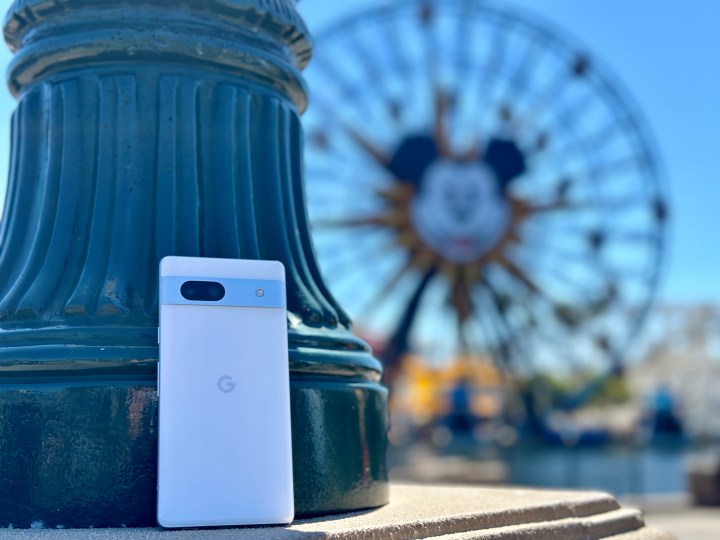
The design of the Pixel 7a is just like its predecessor, with a few minor differences. You still have a high gloss plastic back that looks like glass until you touch it, and an aluminum frame surrounds the edges. Unlike the Pixel 6a’s frame, though, which had an anodized metallic black finish, the aluminum frame of the Pixel 7a matches the color of the device that you choose. For my Snow review unit, the frame is silver.
With the Pixel 6a, you could tell that it was the cheaper Pixel because it also featured plastic on the camera bar. But the Pixel 7a now features a metallic camera bar, similar to what you’ll find on the standard Pixel 7, just a little thinner (probably due to the smaller sensors).
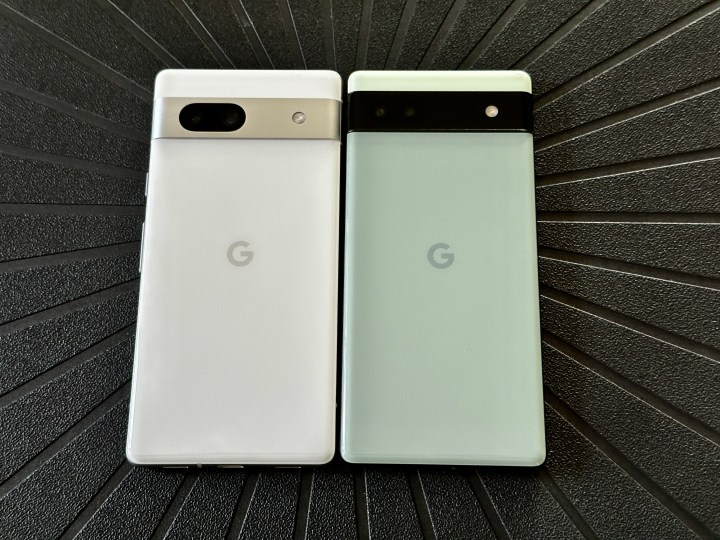
The Pixel 7a is also a smidge taller and wider than the Pixel 6a, but you won’t notice the difference unless you have them stacked on top of one another. Product dimensions for the Pixel 7a are 72.9 x 152.4 x 9.0mm, whereas the 6a is 71.8 by 152.2 by 8.9mm. The Pixel 7a also weighs a little more at 193 grams compared to the previous 178 grams. Despite the very minor differences in size, the Pixel 7a still has the same display size at 6.1 inches, making it the most compact of the Pixel 7 lineup.
The Pixel 7a is more comfortable to hold than the Pixel 7.
Because of the slightly smaller size of the Pixel 7a, it’s more comfortable to hold than the Pixel 7. However, as someone who prefers smaller-sized phones in general, I wish the Pixel 7a was still the same physical size as its predecessor, which was a bit easier for me to hold comfortably. But overall, the design of the Pixel 7a is pretty much the same as other Pixels, just made with high gloss plastic on the back rather than Gorilla Glass Victus.

Lastly, Google claims that the Pixel 7a is one of the most durable Pixel A-series devices yet. It has an IP67 rating, so it can handle water and dust without an issue. The front display is also covered with Corning Gorilla Glass 3, so it’s scratch resistant.
That’s not a bad setup by any means, but seeing how Gorilla Glass 3 was released in 2013 and has been replaced by five newer versions since, its presence on the Pixel 6a does feel a bit dated.
Google Pixel 7a: display and performance

The Pixel 7a has the same screen size as the Pixel 6a, which is 6.1 inches. It’s also a Full HD OLED display with a 1080 x 2400 resolution, a 20:9 aspect ratio, and has Corning Gorilla Glass 3 for durability. However, Google made some minor improvements to make the Pixel 7a slightly better.
Previous Pixel A-series devices have had a 60Hz refresh rate, which was typical for budget phones a while back. But the new Pixel 7a has been bumped up to a smoother 90Hz adaptive refresh rate, dubbed “Smooth Display.” It’s the same setting that you find in the regular Pixel 7, which also has a 90Hz refresh rate.
With the increased refresh rate for the display, you can expect smoother scrolling, animations, and better graphics when gaming. However, the Smooth Display setting is disabled by default, so you have to enable it manually. This is probably due to the poor battery life that the Pixel 7a has (a higher refresh rate decreases battery life), which we’ll get to in a bit.
On the inside, Google packed in the newer Tensor G2 chip, which is an improvement over the first-generation Tensor in the Pixel 6a. You also have 8GB RAM (the 6a only had 6GB), and once again, the only storage option is 128GB.
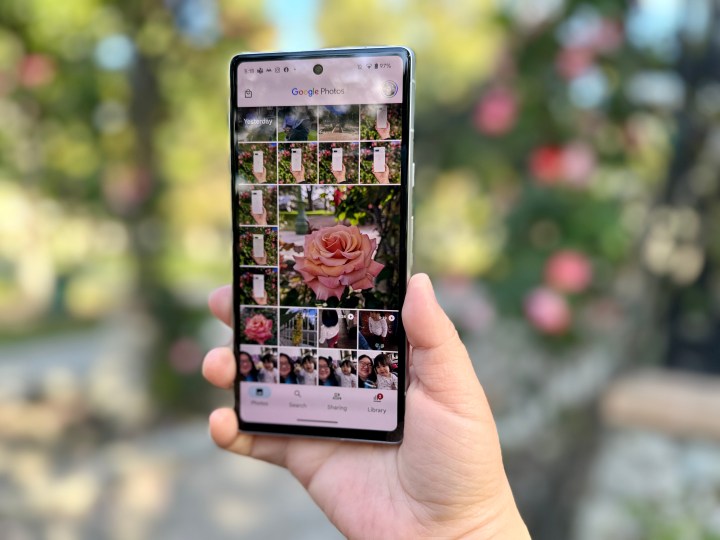
On paper, the specs for the Pixel 7a definitely look impressive for a phone of this price range, but it’s not a terribly big upgrade from what you can get with the Pixel 6a. Yes, the 90Hz refresh rate certainly helps, but I feel like it may not be too noticeable for most people who want an affordable budget phone, as the Pixel 6a is still a good buy. And the extra RAM helps, but it’s still pretty negligible in daily use.
The Pixel 7a isn’t a terribly big upgrade from what you can get with the Pixel 6a.
During my testing with the Pixel 7a, the phone handles my everyday tasks quite well. This includes checking email and messages on Microsoft Teams, endlessly scrolling through Instagram and Facebook, checking Mastodon, lots of camera use and photo editing, using an app for sharing a million images of my toddler daughter with family, watching streaming video and YouTube, checking the news, and some light, casual gaming. The Pixel 7a handles all of these tasks well without skipping a beat.
I’m also quite impressed with how fast the cameras are able to capture a scene. I’ve used the Pixel 7a to take a bunch of photos of my toddler, who can barely sit or stand still (other parents can understand my plight, right?), and the resulting images came out very nicely. Tensor G2 definitely helps with the fast capture on the Pixel 7a.
Google Pixel 7a: software

You get Android 13 out of the box with the Pixel 7a, just like with the Pixel 7 and Pixel 7 Pro. Also, like the standard Pixel 7 lineup, the Pixel 7a will get three years of OS upgrades and five years of security patches.
At this point, Android 13 is pretty mature, and Android 14 is peeping over the horizon. Android 13 is the first Android version I’ve really dived into, and I’ve been quite enjoying it on the Pixel 7a — especially since this is the “pure” version of Android, without various manufacturer skins layered on top.

Android 13, without any custom fork, is simple and clean. I’m a big fan of Google’s Material You theme engine, as it makes customizing your device a breeze with wallpapers and matching color themes, and even dynamic third-party icons that can match your chosen color palette.
Google’s Tensor chip also makes a lot of the AI features on the Pixel 7a very appealing, and a big reason to consider the Pixel 7a — or any Pixel for that matter. For example, Magic Eraser works wonderfully, and you have access to features like Google Assistant on phone calls to hold your place in line and more.
Overall, the software on the Pixel 7a runs well, thanks to the performance boost Google gave it in terms of specs. It’s fast, responsive, and easy to use. If you’re a fan of the stock Android experience, then you can’t go wrong with the Pixel 7a.
Google Pixel 7a: cameras
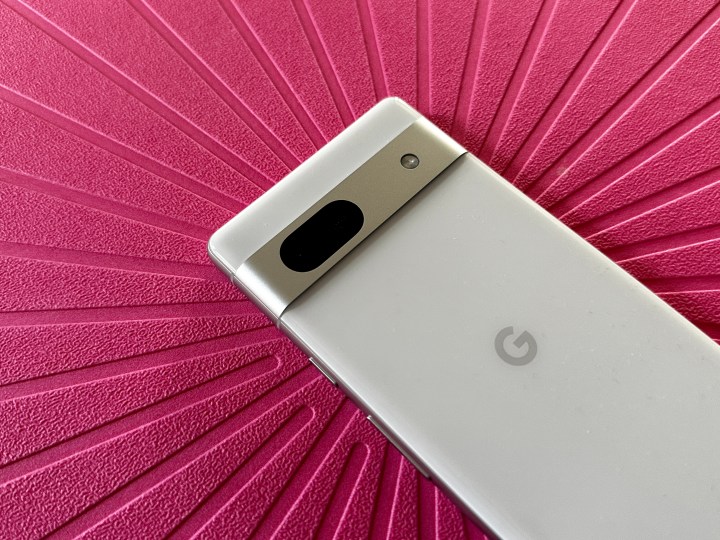
Even though the Pixel 7a is the budget phone of the Pixel 7 lineup, Google decided to give it some impressive camera hardware — even surpassing the Pixel 7 and Pixel 7 Pro in some aspects.
There’s a 64MP main camera on the Pixel 7a and a 13MP ultrawide sensor. For comparison, the Pixel 7 and Pixel 7 Pro both have a 50MP main camera and a 12MP ultrawide camera. However, Google claims that despite the Pixel 7a having a higher megapixel count than its siblings, the sensor is not as large as the one on the Pixel 7 and 7 Pro. This means that the Pixel 7a may not be as good when it comes to capturing low-light images.
With the Google Pixel 6a, you already could take some great photos without much effort, and that was just with a reliable 12MP camera. In my time with the Pixel 7a, I’m really impressed with the image quality. The 64MP camera is nothing to sneeze at, as it captures incredibly detailed and sharp photos without looking too over-processed. The colors are also vivid and punchy but without the over-saturation that you get with most Samsung phones, or harsh colors that I always get on my iPhone 14 Pro when it’s super bright out.
Even when it was a bit cloudy and overcast out, the Pixel 7a handled these not-so-great lighting conditions well, and the pictures came out great, despite the circumstances. And again, with the Tensor G2 chip powering it, the Pixel 7a is very quick to snap a photo, as I’m able to capture good images even when my toddler is on the move.
I’m really impressed with the Pixel 7a’s cameras.
The selfie camera on the Pixel 7a is also a big step up from its predecessor with its 8MP camera, as well as the base model Pixel 7, which only has a 10.8MP front camera. On the Pixel 7a, you have a 13MP selfie camera. I think the Pixel 7a takes some excellent selfies that are detailed and with just the right amount of bokeh going on in the background when you snap them in Portrait mode (this also applies to Portrait images with the rear camera).
Skin tones still seem to be a bit of a hit or miss, though, depending on the lighting at the time. Sometimes it seemed to capture my skin tone correctly, and other times I looked a tad paler than I actually am. But when the skin tone is accurate, the images look splendid. Lowlight images are not great, though. While they’re acceptable, you can definitely see that the details are very soft, and the colors may appear a bit washed out. This is definitely where the larger sensors on the Pixel 7 and 7 Pro would come in handy.
Google Pixel 7a: battery and charging

Unfortunately, battery life is the Pixel 7a’s weakest point. Since the Pixel A-series is the smallest of the Pixel lineup, it typically has the smallest battery to go alongside the physical size. With the Pixel 7a, you get a 4,385mAh battery, which is actually less than its predecessor’s 4,410mAh battery, though it’s on par with the Pixel 7’s 4,355mAh one. Once again, Google claims that the Pixel 7a is a 24-hour smartphone, though you can extend it to 72 hours by using the Extreme Battery Saver setting.
Pixels have never been known to have great battery life, and this is especially true with the Pixel 7a. My usage with the Pixel 7a has been what I would consider light to medium use since I’ve primarily just been using the device on Wi-Fi. I do use it for checking email, work messages, social media, taking photos and editing them, watching videos and streaming music, web browsing, and other everyday tasks. Nothing heavy or super resource intensive, but I notice that the battery just continually drains, even if it’s just sitting on my desk.
If this were my primary phone, I definitely don’t see it lasting more than a day with heavy use. Even when I was just out taking photos with the Pixel 7a, the battery would drain faster than I’d like, and it also tends to get warm. It doesn’t appear that the Tensor G2 chip did a lot of improving on the power efficiency front, unfortunately.
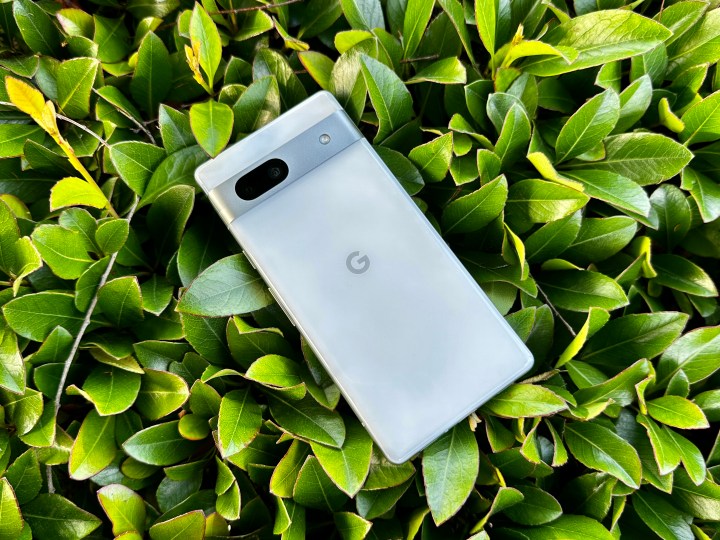
The Pixel 7a caps out at 18W fast charging through a USB-C cable, so it’s not the fastest option out there. For example, the Samsung Galaxy S23 has a smaller 3,900mAh battery (but oddly enough, battery life seems to be better with it) but has fast charging at 25W. The standard Pixel 7 is not much better than the Pixel 7a, as it’s only 20W wired charging. Getting the phone from zero to 100% takes a little over 1.5 hours.
I definitely don’t see the Pixel 7a lasting more than a day with heavy use.
Google did add wireless charging to the Pixel 7a, though, which is a first. Unfortunately, it’s much slower than even the regular Pixel 7, as it is just 7.5W with Qi-compatible wireless chargers, though you’ll get slightly faster wireless speeds if you use Google’s Pixel Stand accessory. Unlike the Pixel 7, there is no reverse wireless charging (Battery Share).
While Google made improvements to the Pixel 7a by adding wireless charging capabilities, it also took two steps backward by having a smaller battery capacity than the Pixel 6a and also making the wireless charging speed much slower than the regular Pixel 7, with no Battery Share option either.
Google Pixel 7a: price and availability
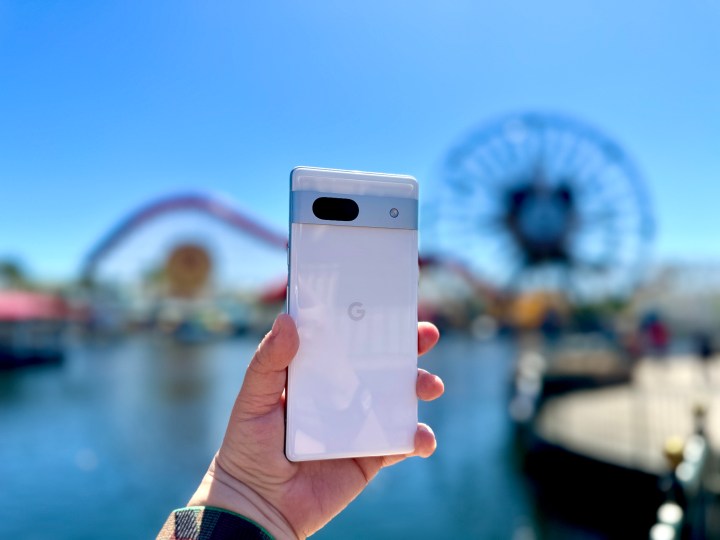
The Google Pixel 7a is available for purchase right now for $499. You can buy it directly from Google, retailers like Amazon and Best Buy, and wireless carriers. The Pixel 7a comes in four colors: Charcoal, Snow, Sea, and the Google Store-exclusive Coral.
The pricing of the Pixel 7a puts it in an odd place and makes it difficult to recommend — especially considering that the Pixel 6a continues to be sold at a new low price of $349.
If you are looking for the most affordable Pixel phone, the Pixel 6a is tough to beat, especially since it’s still a great device. But if you want more megapixels, higher refresh rate, and wireless charging, then the Pixel 7a is better — until you see that the Pixel 7 is just $100 more and offers larger camera sensors, a slightly better battery, reverse wireless charging, and an overall better AMOLED display.
It’s a bit of a pickle for the Pixel 7a. If the Pixel 6a were discontinued, then it would be easier to recommend the Pixel 7a, but that isn’t the case.
Google Pixel 7a: verdict
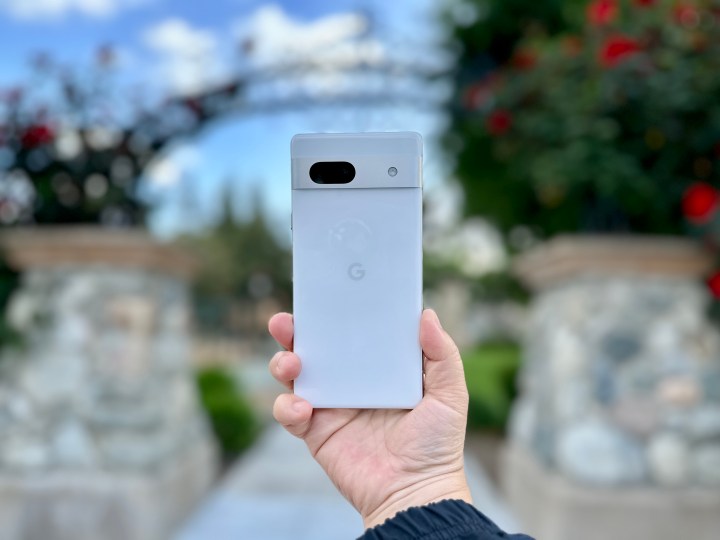
If you’re looking at the Pixel 7a by itself, it’s a pretty capable device for just $499. It’s the smallest of the Pixel 7 lineup, but the 6.1-inch display looks good with vibrant colors and rich blacks, and the 90Hz refresh rate makes scrolling and gaming better. You get Android 13 powered by the Tensor G2 chip, so everything runs smoothly and is quite snappy and responsive, especially with the 8GB RAM.
You also get an impressive 64MP main camera and 13MP ultrawide lens, and thanks to the Tensor G2 chip, the camera app is pretty fast when it comes to capturing photos, even when your subject is in motion. Plus, this is the first time that the Pixel A-series has wireless charging.
However, keep in mind that though the camera has a higher megapixel count than the regular Pixel 7 and Pixel 7 Pro, the sensors on the Pixel 7a are smaller, so lowlight images won’t turn out as well. And battery life is far from great, and wireless charging is quite slow.
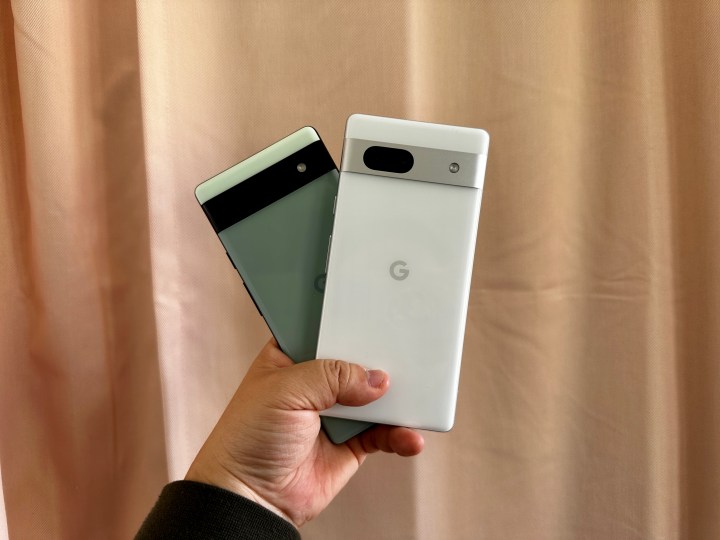
And when you look at the Pixel 7a among the competition, it becomes much harder to recommend. If you are wanting a super affordable Pixel, then the Pixel 6a is still being sold with a large price cut, now costing just $349 (down from $449). Though the display only has a 60Hz refresh rate, and the main camera is 12MP, it’s still a very reliable phone and certainly not a bad device at all — even more so at that new, low price.
If you want a Pixel that offers more, then there is also the Pixel 7, which is just $100 more ($599) than the Pixel 7a. You’ll have a slightly larger display at 6.3 inches, the same 90Hz refresh rate, Android 13 with Tensor G2, and 8GB RAM with 128GB storage. But while the Pixel 7 only has a 50MP main camera, it still has larger sensors that can handle low light photos better, faster wireless charging, and also Battery Share reverse wireless charging.
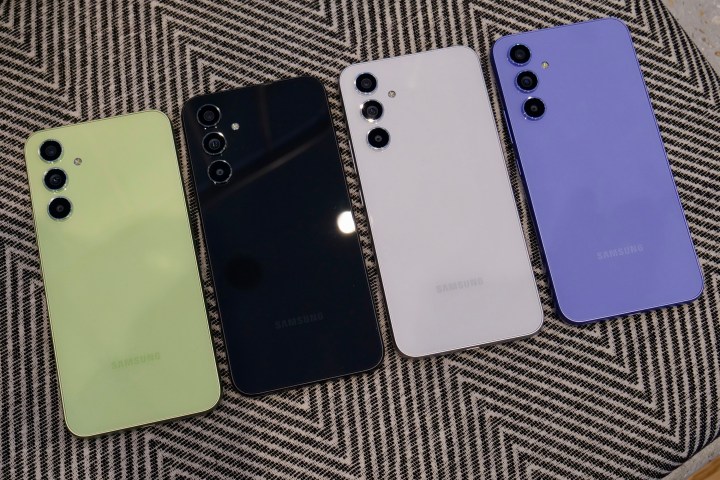
Another option in the price range of the Pixel 7a is the Samsung Galaxy A54. For just $450, you’ll get a crisp 6.4-inch AMOLED display with a 120Hz refresh rate, which already blows the Pixel 7a out of the water. Samsung’s Exynos 1380 processor is fast and snappy with Android 13/One UI 5.1, there’s 6GB/8GB RAM with 128GB storage and the option for expandable storage with microSD, a 50MP main camera, and a 5,000mAh battery with 25W charging speeds (but no wireless charging). Of course, Samsung phones are known for over-saturated and bright colors in photos that may not be super realistic, so that’s one factor to consider. But otherwise, the Galaxy A54 is a great buy.
Again, the Pixel 7a is a good device on its own, but when you take a look at the other options available — especially in similar price ranges or the rest of the Pixel lineup — it’s a hard sell. It’s far from a bad phone, just a misguided one.
Editors’ Recommendations
